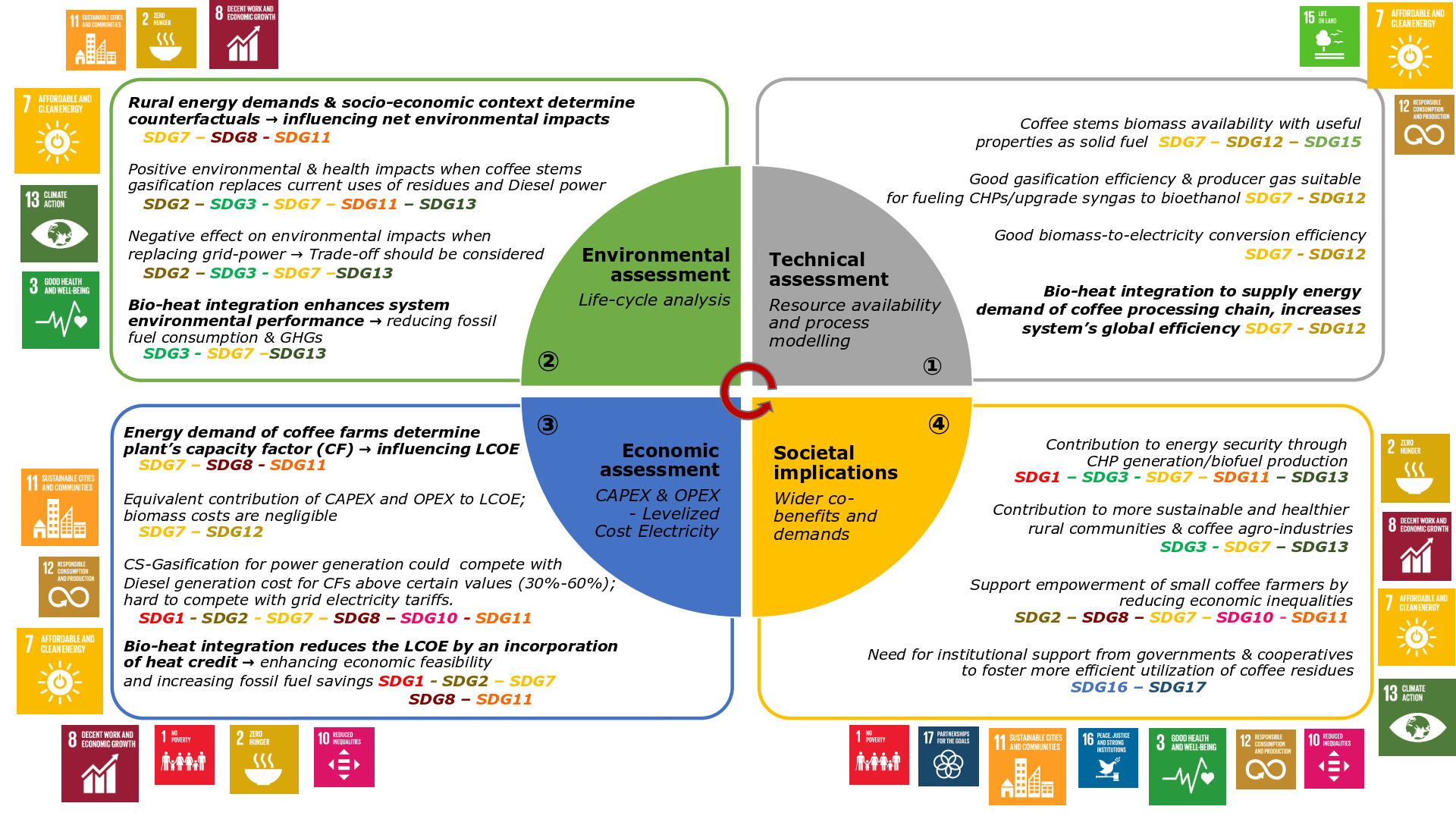The UN's Sustainable Development Goals are the blueprint to achieving a better and more sustainable future for all. They address the global challenges we face, including those related to poverty, inequality, climate change, environmental degradation, peace and justice. Each of the cards below will explain how Bioenergy can help to achieve them.
You can learn more about the SDGs on the UN's website here.
Below you can read about how Bioenergy works towards each SDG. Click on a card to learn more!
Sustainable production of bioenergy feedstocks can contribute to SDG1 by improving incomes and livelihoods of farming communities and incomes and supporting equal access to economic resources, ownership and land control among farmers.
Sustainable bioenergy can contribute to SDG5 by providing opportunities for women. Providing skills, jobs and income can lead to an improvement in socio-economic conditions, particularly in rural areas.
Sustainable bioenergy can support SDG9 by promoting technological and business innovation and research in rural areas through the introduction of modern and cleaner technologies that improve the resource-use efficiency and the value chain of agricultural systems.
Sustainable bioenergy can contribute to SDG13 by producing low-carbon energy that can result in reduced GHGs emissions when traditional biomass practices and fossil fuel energy are displaced.
Sustainable bioenergy can contribute to SDG17 by promoting the development, transfer, dissemination and diffusion of environmentally sound technologies to developing countries on favourable terms.
Sustainable production of bioenergy feedstocks can contribute to SDG2 by improving farmer’s incomes, reducing fuel costs and adding value to supply chains. Bioenergy supply chains should be developed to complement sustainable agricultural and rural practices.
Sustainable bioenergy can contribute to SDG6 by providing mechanisms for improving water quality and consumption. Clean water technologies installed to enable bioenergy schemes can be used by wider communities.
Sustainable bioenergy can support SDG10 by providing positive environmental, economic and social benefits for the lands and communities where is it deployed. Improving the income and livelihood of rural communities will have a positive influence on reducing inequalities.
Sustainable bioenergy can support SDG14 by generating low-carbon energy with lower CO2 emissions that contribute to reducing ocean acidification and its negative impact on marine life.
Sustainable bioenergy can contribute to SDG3 by displacing polluting rural practices. For example, using agricultural residues to fuel bioenergy systems rather than burning them in the field. Bioenergy can reduce the formation of particulate matter and other contaminants, improving local air quality and human health.
Sustainable bioenergy can contribute to SDG7 by producing renewable electricity, heat and transport fuels. Bioenergy can generate less GHGs and other pollutants than fossil fuels, can be cost-competitive, and; provide secure and efficient energy for both rural and urban communities.
Sustainable bioenergy can contribute to SDG11 by providing a link between both rural and urban communities, biomass supply chains being intrinsically linked to people, the land and industry. Bioenergy can provide secure low carbon energy that is an essential driver of sustainable development of cities and communities.
Sustainable bioenergy can contribute to SDG15 by promoting the implementation of sustainable management and efficient use of agricultural resources. Biomass resource production can also provide many positive ecosystem service benefits to conserve and protect terrestrial and freshwater ecosystems.
Sustainable bioenergy can contribute to SDG4 by providing examples and evidence to learners on the knowledge and skills needed to promote sustainable development.
Sustainable bioenergy can contribute to SDG8 by providing cost-competitive energy - a key driver of economic growth and sustainable development. Bioenergy can be a mechanism that supports the development of small agricultural business and secure, local and sustainable energy sources.
Sustainable bioenergy can contribute to SDG12 by providing a valuable mechanism of generating energy from waste and residues materials that may otherwise have resulted in environmental impacts through the waste management pathways. Development of sustainable feedstock supply chains can, therefore, help waste reduction and strengthen sustainable patterns of consumption and production.
Sustainable bioenergy can contribute to SDG16 as it requires collaboration between institutions, farmers, cooperatives, local and national governments and researchers to foster more efficient resource use and deployment of bioenergy technologies.
Case Study: Sustainability Benefits of Generating Bioenergy from the Agricultural Sector Wastes & Residues
The following framework is part of the PhD research of Dr. Samira Garcia Freites about "Using agricultural residues to support sustainable development: a case study of coffee stems gasification to supply energy demands in rural areas of Colombia".

















